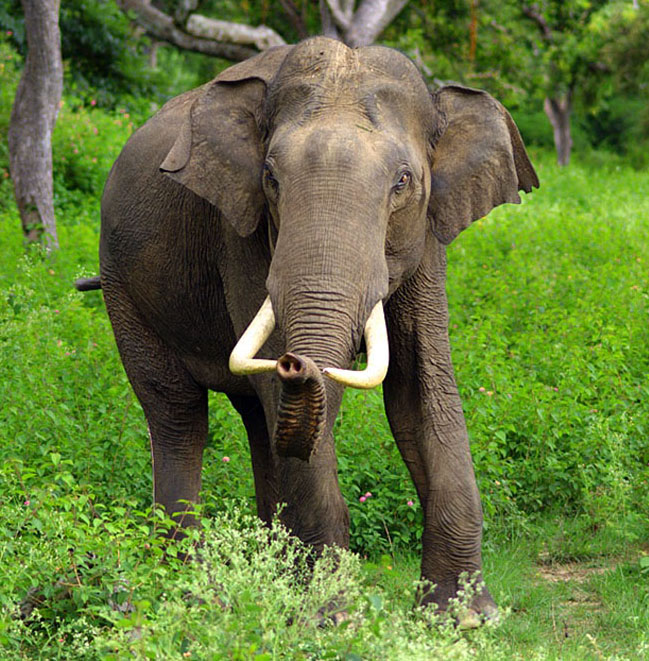The Many Uses for the Ghost Chili
Other than being known for its use in spicy food or
spices, the Bhut jolokia has many other practical uses. To
start, the compound in which all plants in the genus Capsicum
produce as a defense mechanism towards herbivores, capsaicin, is
used in many medical situations.
Capsaicin, to start, is used as a dermal patch to relieve
pain in damaged areas. Surgeons have studied the use of the
compound in operations as well.
Post surgery patients who apply capsaicin to the injury
are said to become less dependent on dangerously addictive
painkillers quicker than patients who do not apply the chili’s
compound. Creams
that contain capsaicin can be used to temporarily relieve pain
of strains, sprains, or simple backache. The most popular use of
capsaicin in the medical field is pain relief from arthritis or
minor aches and pains for elderly people.
 As reported by National Geographic (see
www.nationalgeographic.com ) native people of Assam, India have
been using the Bhut jolokia as a repellant against elephants.
Fences, lined with a combination of grease and crushed ghost
chilies, surround sugar cane crops to ward off unwanted wild
elephants.
The
natives have also developed smoke bombs with dried bhut jolokia as
the main ingredient.
Along with defending their crops with this smoke bomb, the defense
weapon is used to protect the homes of the locals as well. In fact,
Fox news (www.foxnews.com)
reported on March 19, 2010 that the Indian military has reveled it
“hottest” weapon yet. The national military has developed a more
efficient and potent version of the Assam local’s smoke bomb, a Bhut
jolokia grenade. This
weapon is non lethal, but it is an effective crowd control.
The victims do not only taste the incredible spice, they are
blinded by it for hours and are literally choked by the bhut jolokia
powder that is scattered through out the air.
There have been talks as using this against terrorists as
well, but for now riot control is the only use.
As reported by National Geographic (see
www.nationalgeographic.com ) native people of Assam, India have
been using the Bhut jolokia as a repellant against elephants.
Fences, lined with a combination of grease and crushed ghost
chilies, surround sugar cane crops to ward off unwanted wild
elephants.
The
natives have also developed smoke bombs with dried bhut jolokia as
the main ingredient.
Along with defending their crops with this smoke bomb, the defense
weapon is used to protect the homes of the locals as well. In fact,
Fox news (www.foxnews.com)
reported on March 19, 2010 that the Indian military has reveled it
“hottest” weapon yet. The national military has developed a more
efficient and potent version of the Assam local’s smoke bomb, a Bhut
jolokia grenade. This
weapon is non lethal, but it is an effective crowd control.
The victims do not only taste the incredible spice, they are
blinded by it for hours and are literally choked by the bhut jolokia
powder that is scattered through out the air.
There have been talks as using this against terrorists as
well, but for now riot control is the only use.
 The reason why I chose this organism was because of it
infamous, scorching, spice that has caused pain for so many people
who have dared to conquer it.
The Assam native chili sets a very high mark on the Scoville
heat unit rating system at 1,001,304. This is about twice as hot as
Mexico’s red savina habanero that ranks at 577,000 scoville units
and one hundred times as hot as a jalapeno pepper (10,000 scoville
units). The Bhut
jolokia currently is the 3rd hottest chili on the planet,
has been featured on many TV shows, and is served in restaurants all
over the planet.
The reason why I chose this organism was because of it
infamous, scorching, spice that has caused pain for so many people
who have dared to conquer it.
The Assam native chili sets a very high mark on the Scoville
heat unit rating system at 1,001,304. This is about twice as hot as
Mexico’s red savina habanero that ranks at 577,000 scoville units
and one hundred times as hot as a jalapeno pepper (10,000 scoville
units). The Bhut
jolokia currently is the 3rd hottest chili on the planet,
has been featured on many TV shows, and is served in restaurants all
over the planet.
